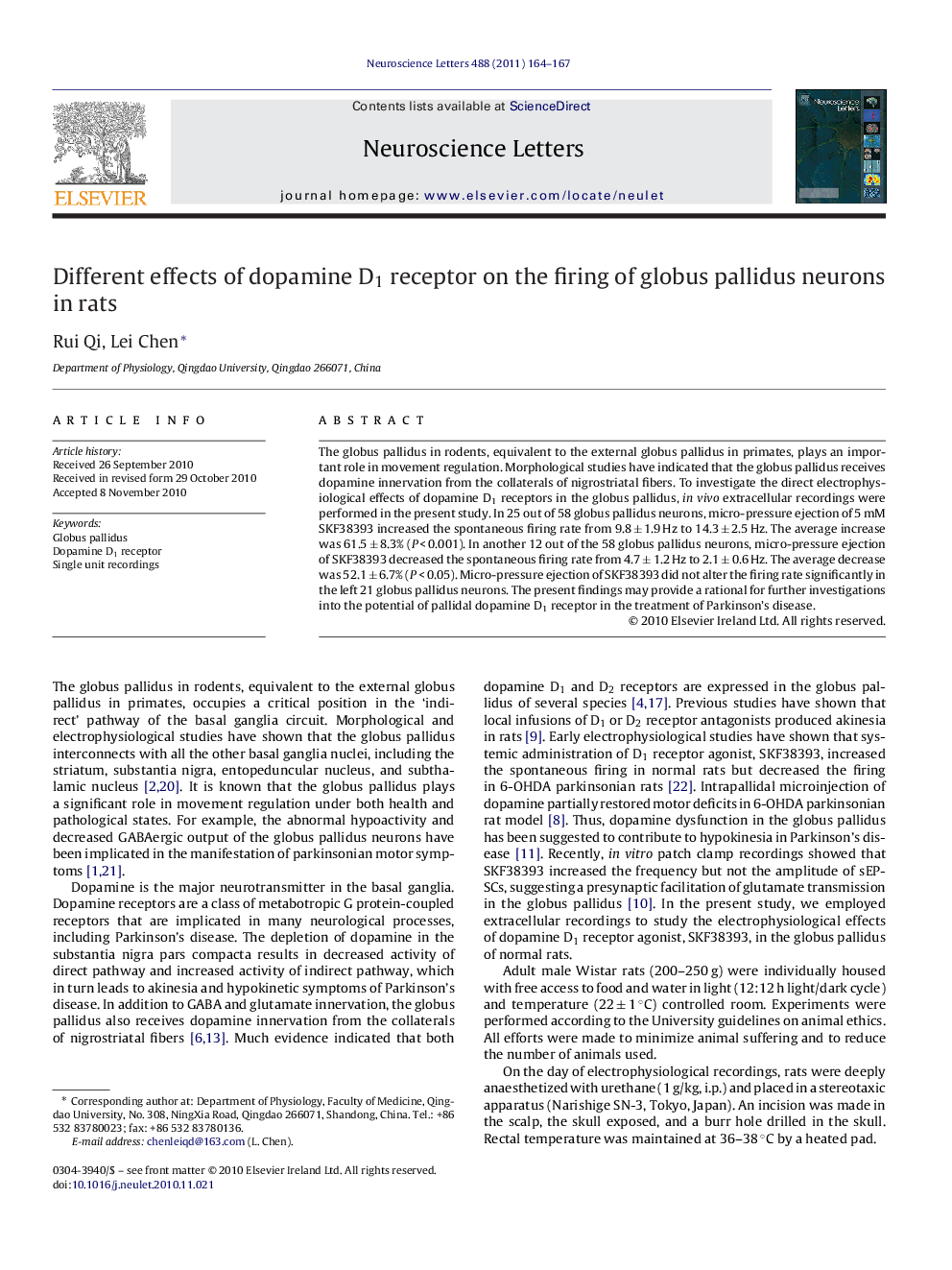| Article ID | Journal | Published Year | Pages | File Type |
|---|---|---|---|---|
| 6285314 | Neuroscience Letters | 2011 | 4 Pages |
The globus pallidus in rodents, equivalent to the external globus pallidus in primates, plays an important role in movement regulation. Morphological studies have indicated that the globus pallidus receives dopamine innervation from the collaterals of nigrostriatal fibers. To investigate the direct electrophysiological effects of dopamine D1 receptors in the globus pallidus, in vivo extracellular recordings were performed in the present study. In 25 out of 58 globus pallidus neurons, micro-pressure ejection of 5 mM SKF38393 increased the spontaneous firing rate from 9.8 ± 1.9 Hz to 14.3 ± 2.5 Hz. The average increase was 61.5 ± 8.3% (P < 0.001). In another 12 out of the 58 globus pallidus neurons, micro-pressure ejection of SKF38393 decreased the spontaneous firing rate from 4.7 ± 1.2 Hz to 2.1 ± 0.6 Hz. The average decrease was 52.1 ± 6.7% (P < 0.05). Micro-pressure ejection of SKF38393 did not alter the firing rate significantly in the left 21 globus pallidus neurons. The present findings may provide a rational for further investigations into the potential of pallidal dopamine D1 receptor in the treatment of Parkinson's disease.
Research highlightsⶠSKF38393 increased the firing rate in 25 out of 58 globus pallidus neurons. ⶠSKF38393 decreased the firing rate in 12 out of the 58 globus pallidus neurons. ⶠIn the left 21 neurons, SKF38393 did not change the firing rate significantly.
